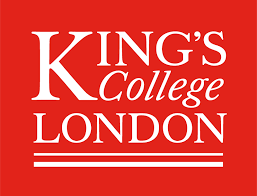PhD Projects
Each of our PhD projects give students the opportunity take part in world-leading research, observing the translational pathway.
2026
Filter
Search
Research Theme
Sponsorship
3D real-time low field MRI guidance of neurosurgical robots
A multimodal device to monitor valvular heart diseases
A Nanoneedle Decorated Balloon Catheter for Non-Invasive Lipidomics Analysis in Personalised Treatment of Atherosclerotic Plaques
A novel flexible robot for automated bronchoscopy investigations
A soft robotic, fluid-driven haptic interface for interventional radiology
Advanced applications of highly accelerated cardiac magnetic resonance imaging
AI tools for optimised planning and evaluation of epilepsy surgery
AI-based next-generation imaging for fast interventional MRI-guided cardiac catheterisation procedures
Anatomy localisation in X-ray fluoroscopy videos for mechnical thrombectomy
Automated tumour contouring of brain metastases for stereotactic radiosurgery planning and response prediction following treatment
Autonomous mechanical thrombectomy navigation to support real-time operator-assisted control
Building autonomous mechanical thrombectomy robots to assist doctors
Building models of placental vascular function – a surgical digital twin
Complex Open Surgery Simulator in the Era of Minimally Invasive Surgery
Computational assessment of the effect of endovascular aortic repair on cardiac function
Computational optimisation and robotics implementation of novel pulsed field ablation technique for atrial fibrillation therapy
Deep tissue diffuse correlation spectroscopy for monitoring transcranial ultrasound interventions
Developing automated contrast agnostic brain parcellation for neurosurgical planning and guidance
Development of a flexible robot, flexible instruments, and autonomy for cataract surgery
Development of Bone Implants Using Tissue Engineering and Bioprinting Techniques
Development of novel widefield imaging modalities for enhancing intervention in twin-to-twin transfusion syndrome
Digital twin for interventional outcome prediction in submassive pulmonary embolism patients undergoing thrombus removal
Engineering gold based nanomaterials for image guided surgery in glioblastoma
Hand-foot haptic interface for controlling soft everting robots and instruments in surgical interventions
Hemodynamic digital twin and dancing bubbles to unlock central blood pressure
High-resolution multi-nuclei magnetic resonance imaging through radiofrequency coil innovation integrated with surgical intervention training
Implanted antennas and nanoparticles for wireless control activation of therapeutics
Integrated AI workflow for non-invasive coronary intervention
Integrating deep learning and radiomics to predict glioblastoma response to treatment
Miniature photoacoustic and ultrasound endoscopy probe for colorectal polyp diagnosis
MRI compatible everting robot for therapy delivery in the brain ventricles
Neurological digital twins: precision surgical planning of epilepsy treatment
Optical neural imaging system for guiding brain tumour surgery
Physical simulator for trans-venous cardiac pacemaker implantation training
Physically intelligent tip-growing catheters for neurointerventional procedures
Precision guidance for deep brain stimulation surgery via patient-specific structural connectivity mapping using ultra high field MRI
Predicting robotic surgical skill performance through machine learning analysis of surgeon and surgical instrument motion
Robotics and AI to Improve In Vitro Fertilisation Outcomes
Stable & precise operation of soft surgical robots using image-guided variable impedance control for guaranteed patient safety
Supervised autonomy in minimally invasive surgery for manipulation of highly deformable objects
Surgical intervention planning in fetal congenital heart disease
Tactile-aided Visual Navigation and Localisation for Robot-assisted Minimally Invasive Surgeries
The evolution of relative humidity and corrosion inside active implants
Understanding the limits of continuum robots: data-driven insights from medical practitioners
Ventricular Tachycardia Ablation Guidance Using Cardiac Digital Twin Models Calibrated by Pre- and Intra-Procedural Implanted Device Signals
Vision-based surgical robot arm docking assistance for optimal spatial configuration
Vision, audio, and language models for surgical interventions

